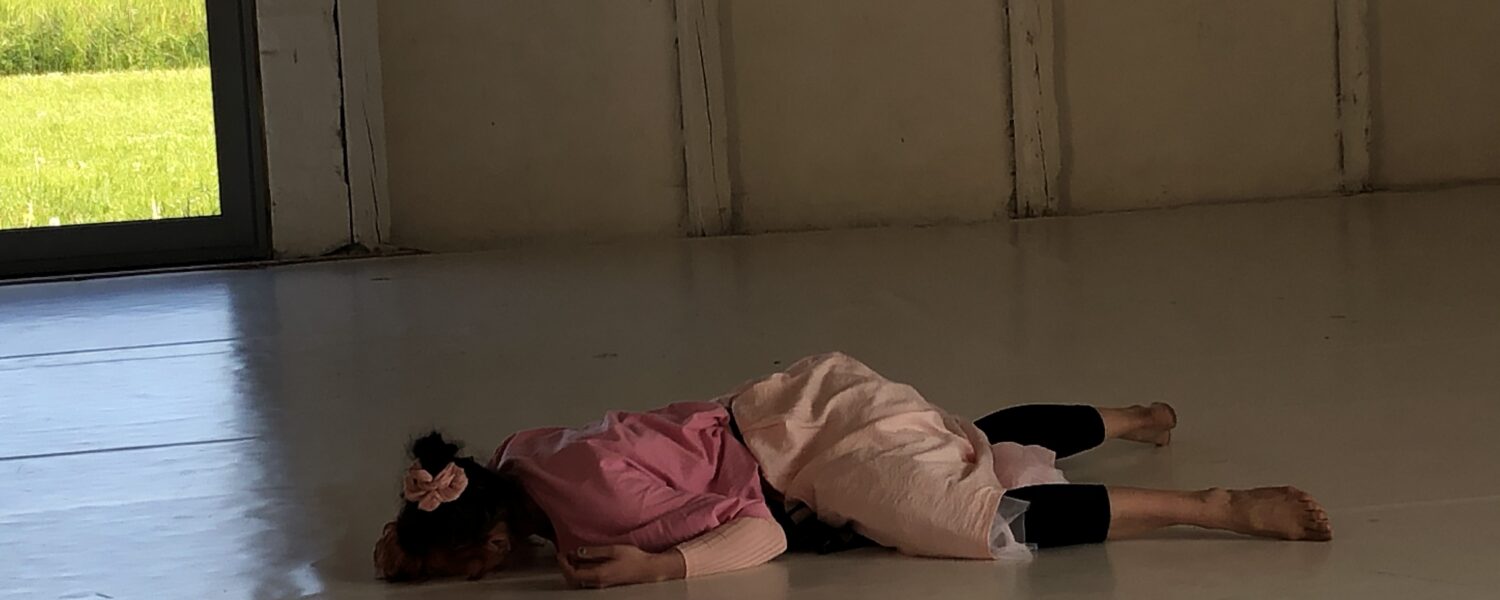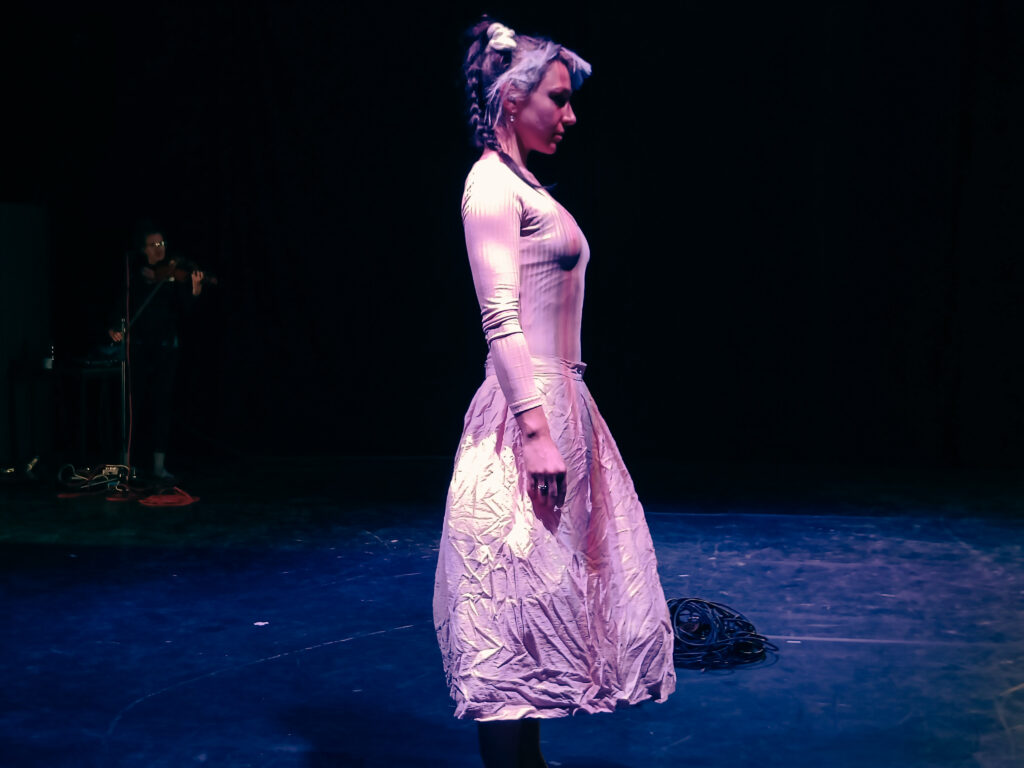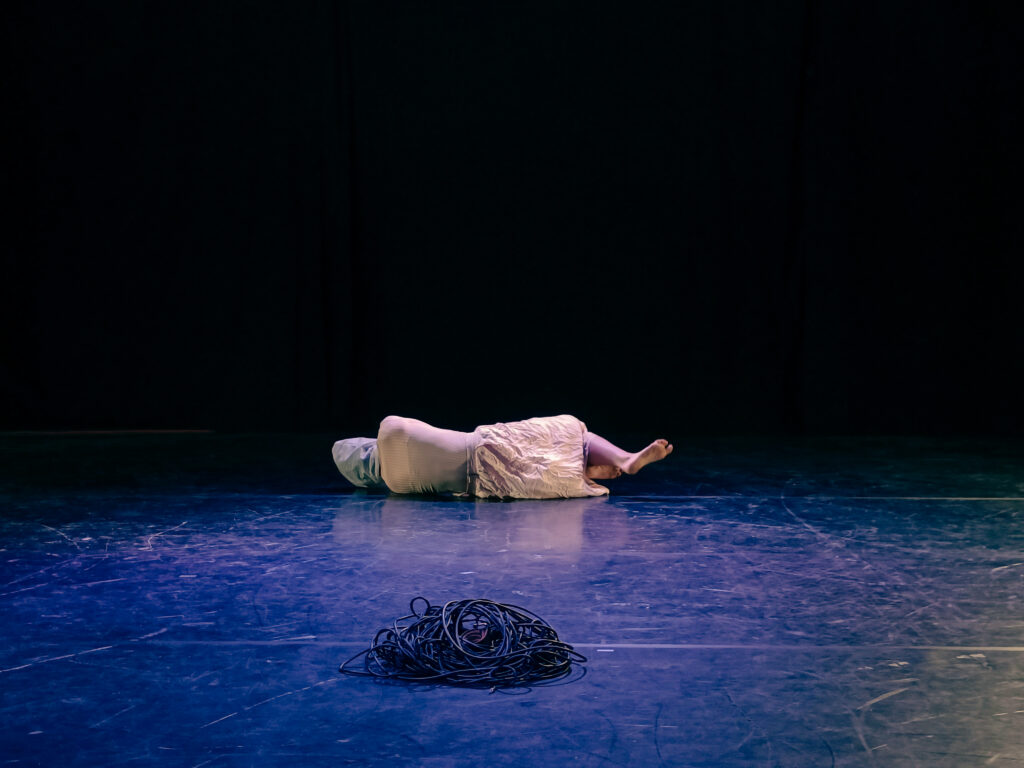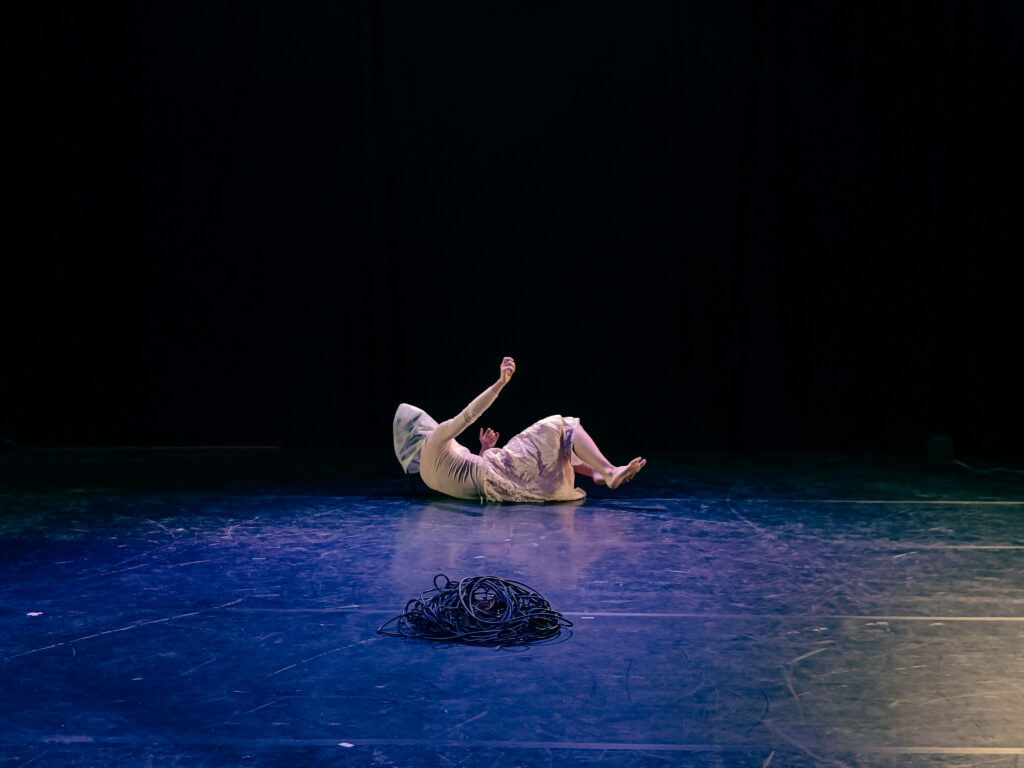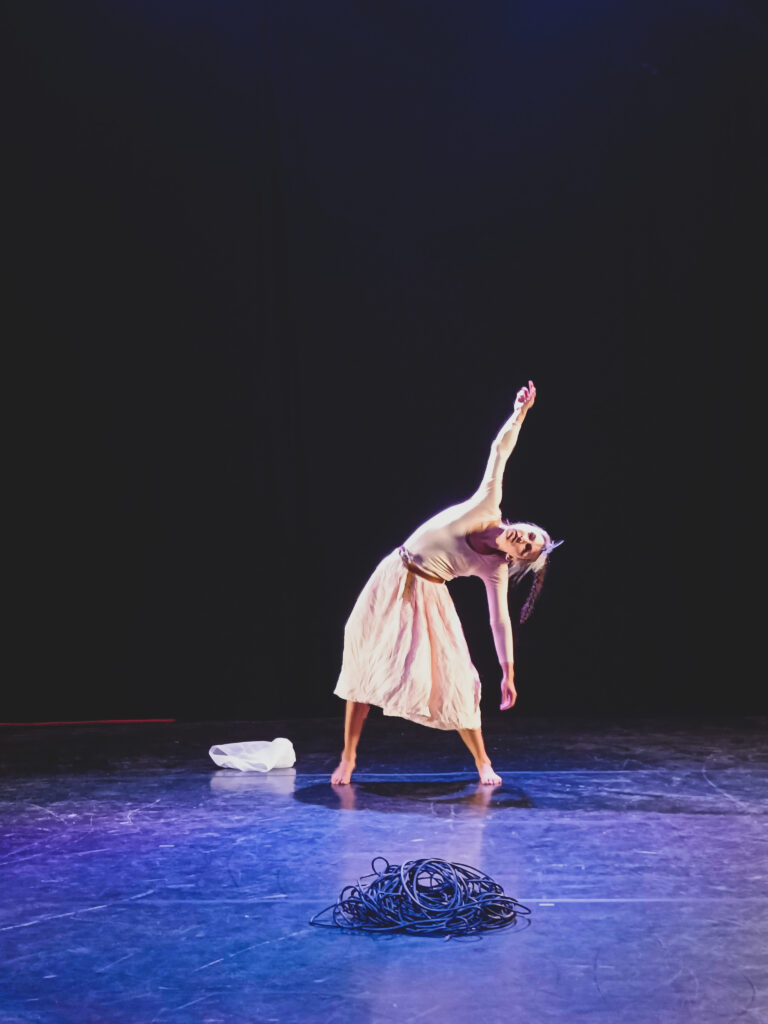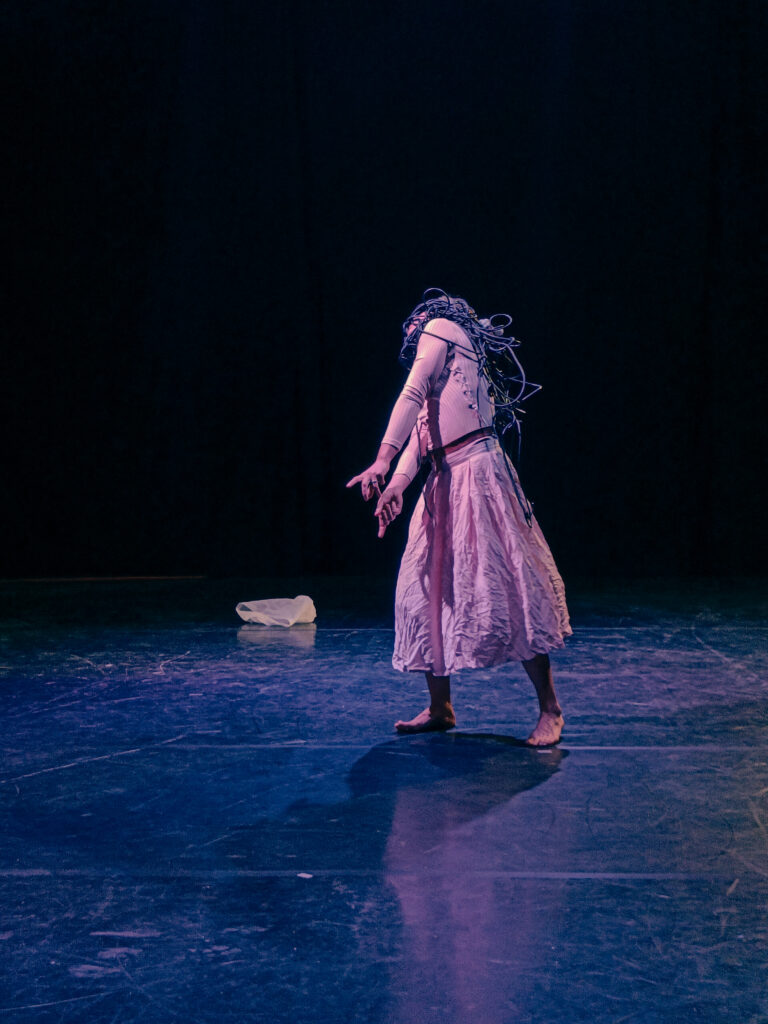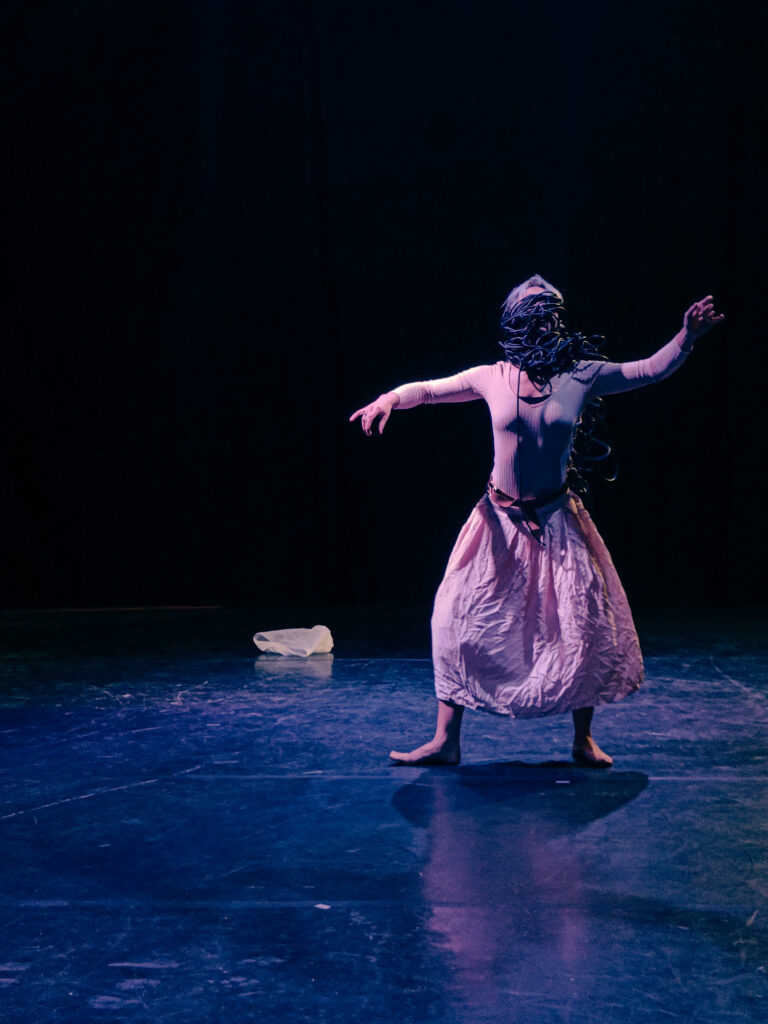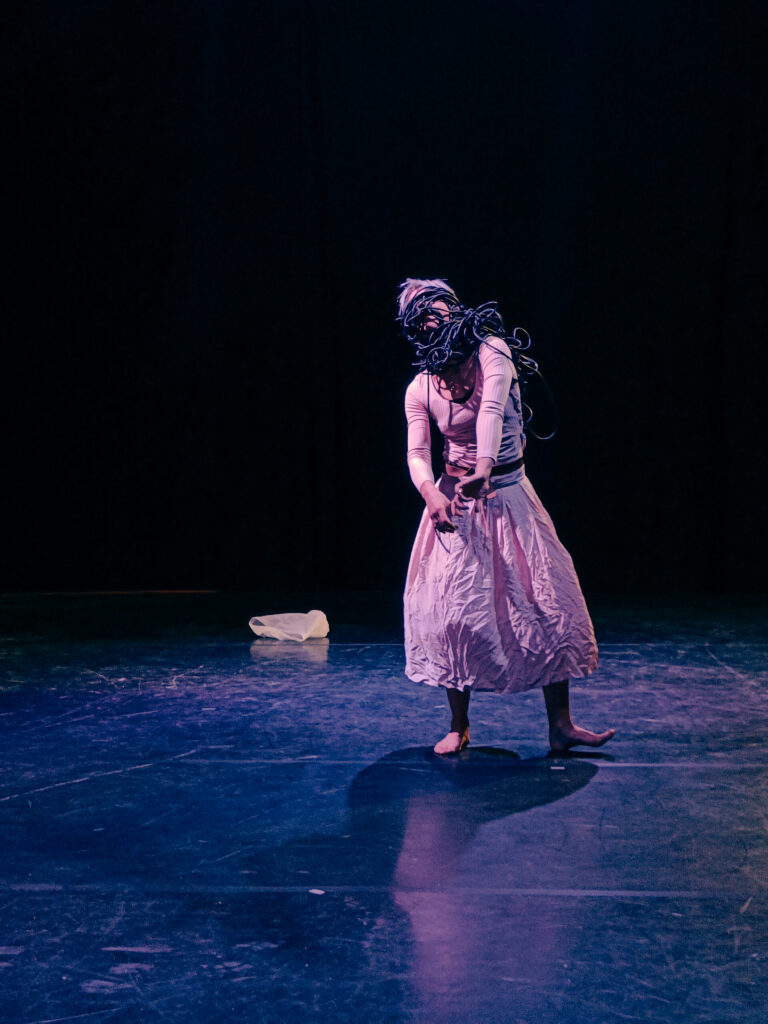Rest In is an exploration of human existence in a crisis and the transformation and initiation that happens after a crisis. The place where we need to let go of what we cannot control, where the old needs to die and we are forced to accept the new. Being left with empty hands in the unknown space where the new can now be born.
Karolina (dancer) and Liv Vester Larsen (sound artist) explore together the sound and movement of that space between agony and acceptance. How does the body and mind move in space between agony and acceptance? What physical form does it take and what soundscape does it shape? With the collaboration of a performance artist and a musician they take the audience on a slow-paced journey from suffering to transformational initiation.
Using true fictionalised biography material, electrical cables, belts, butoh dance, and ongoing repetitions of rituals with experimental and monotonic sounds.
Kort interview med artisterne (på Engelsk)
Q: How did this project start and where in the process are you now?
Karolina: I started to think about this project in 2016. I knew I wanted to do a solo and I knew it would be my story because there is a lot of material that I can take from there and use as a material for a performance. The project started to physically manifest on BIRCA early in May. It’s hard to tell where in the process we are, maybe 60% in. There are still some many details that needs to be set and movement qualities that needs to be worked on. I guess as longs as it’s fun, inspiration comes in.
Q: How did you two meet and what’s the creative relationship like?
Karolina: Liv and I met in June at the Acting for Climate residency/workshop at BIRCA. We just clicked and had similar views of philosophy on human pain and crisis. The creative relationship is very new, we only had 4 days together. Right now, I have been explaining the ideas I have in my mind and Liv has been helping out with creating it musically with her medium.
Q: The themes you address in the piece are very heavy – pain, trauma and healing. Why are these important for you and how did you navigate your way to putting them on stage in this format?
Karolina: Pain, trauma and healing are very much a part of life, and most people after 20 years old experience it. It’s a part of life just like getting old. And they are difficult topics. They are embarrassing, complex and often difficult to look at. And I believe that by looking at pain, standing face to face with it, putting it in the spotlight we can heal it and be less scared of it.
Pain and trauma can be many things. It can be something from losing your child, not have your needs met in some degree from your parent to being bullied and not feeling comfortable the way you are; not being able to make connections with people and be lonely. Pain should be released or at least looked at and acknowledged so we don’t end up like zombies because we are so numbed up of suppressing pain and trauma.
It takes courage, humility, honesty and many other things to allow us to be better humans.
Q: What can you share about the mediums you use (dance, spoken word, live music) and their qualities in addressing these themes?
Karolina: I stopped doing circus because of an accident and I came to the conclusion that I don’t want to do hair-hanging or chines pole yet, which were my disciplines. So, I had to find other mediums through which I could express myself. I love dance and music; everyone can interpret and understand it. It’s one of the best mediums. Text gives another dimension; in this piece I use spoken word and text to give examples from my own life and connect through narrative.
Q: What are three things you wish people will say when they see the piece?
Karolina: I mean art is supposed to make you feel something or think. So those two reactions are nice reactions.
